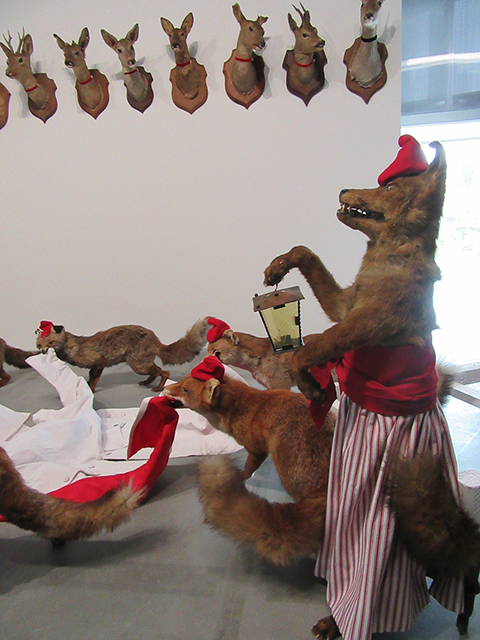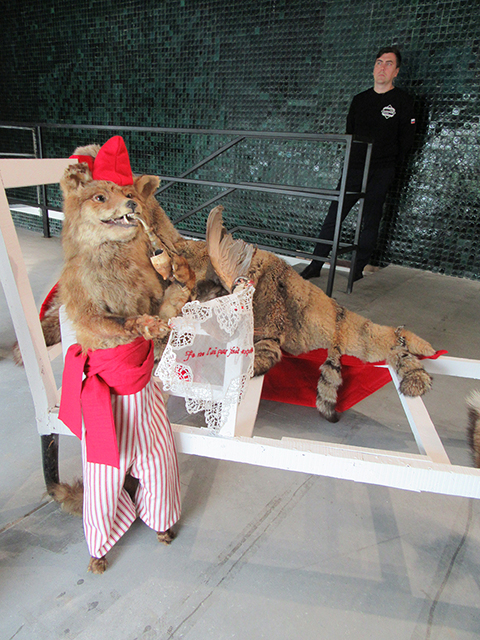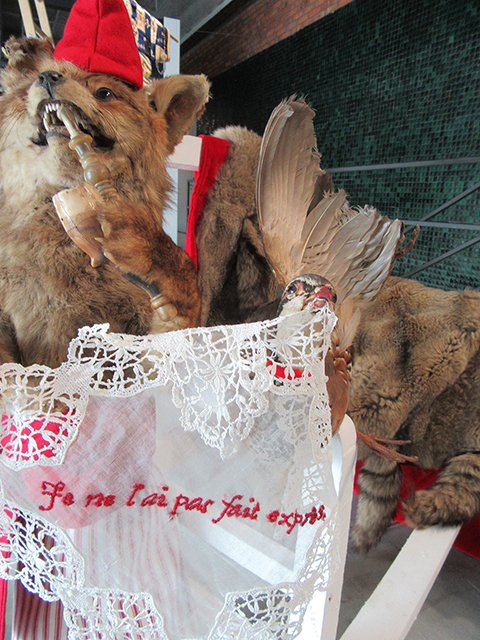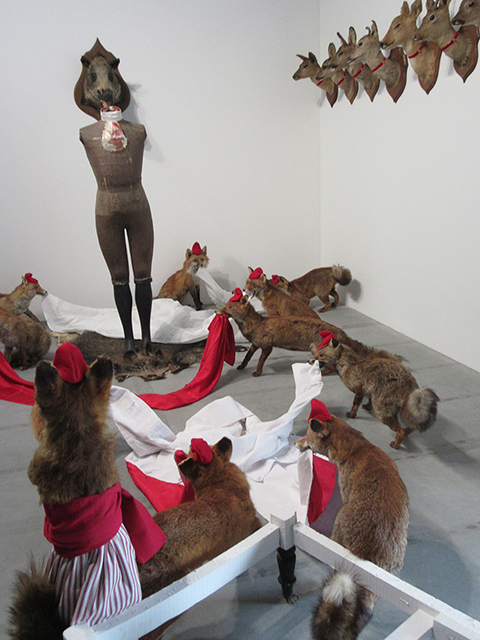The fabric of felicity






Taking its title from a passage in pragmatist philosopher Jeremy Bentham’s An Introduction to the Principles of Morals and Legislation, The Fabric of Felicity presents artists who work with clothes and textiles outside the context of fashion.Working with clothes as a medium or metaphor beyond fashion means to position the basic human practice of symbolic and protective concealment of the body in relationship to different powers that shape human behaviors, labor systems, and garment-related beliefs. The Fabric of Felicity questions what happens to the mechanisms of seduction and desire that surround clothing when fashion as a variety of consumerist drive is out of the picture, mixing recent and historical works. The historical part of the show deals with the evolution of work clothes, starting with the dress codes and uniforms of Russia’s Productivist clothing of the early post-revolutionary period, and presents an overview of real and utopian garments designed for specific jobs. An installation by Sharon Kivland examines the sartorial strategies of the French Revolution, the first European government in modern times to establish an egalitarian politics of dress.
La terreur n’est autre chose que la justice prompte, sévère, inflexible
The Terror is nothing other than prompt, severe, inflexible justice
The frame of a duchessse brisée, its main body, stands on a red velvet carriage rug embellished with fox skins. A small stuffed bird perches on the edge of the sofa, holding in its beaks and claws a lace-edged linen handkerchief embroidered in red silk: Marie-Antoinette’s apology to her executioner for stepping on his foot. Twelve stuffed foxes wearing red wool felt Phrygian bonnets, lined with pale pink silk – from among their number, two are also dressed in the costume of the sans-culottes (made by artist Clémentine Bedos), the working-class of the French revolution of 1789 – hold a white linen redingote, lined with red silk, and a fine linen robe à reine and its red silk sash (made by dress-maker Marie-Andrée Bernard-Trébern) in their jaws and paws. They bear these costumes of the ancient regime (it should be noted that in the eighteenth century the wearing of men’s clothing was forbidden to women, save for the costume of hunting – la chasse) towards a nineteenth-century mannequin with painted wooden boots, standing on a boar skin rug, around whose headless neck is a contemporary version of an eighteenth-century jabot in dentelle à l’aiguille point d’Alençon, the floral design after the toile de Jouy ‘Bonnes herbes’, the most popular toile of the revolutionary years) and dentelle au fuseau, appearing to be blood-stained, and lined with ivory Duchesse satin (made by former dentellière – there is no masculine name for the profession – in the Atelier National du Point d’Alençon and now artist Thomas Gaugain). Behind the mannequin is the magnificent head of a boar. The night before he was guillotined (28 July 1794) Robespierre tried to kill himself with a pistol but only shattered his lower jaw (there is another version of this: the gendarme Charles-Ndré Merdra claimed to have shot him). In the room of the Committee of Public Safety Robespierre lay on the table until a doctor was summoned to attempt to staunch the bleeding from his jaw. Robespierre’s last recorded words may have been ‘Merci, monsieur’, thanking the man who gave him a handkerchief for the blood on his face and clothing. On 28 July 1794 Robespierre went to the guillotine in Place de la Révolution, without trial. When clearing Robespierre’s neck to meet the blade, the executioner tore off the handkerchief holding his shattered jaw in place, causing Robespierre to produce an agonised scream until he was silenced by the fall of the blade. To the left and right of the passage of the glorious, victorious vulpine mob are twelve stuffed deer heads. Around each neck is a red ribbon, like that sported in defiance by those attending the bals de victimes (which may be apocryphal). They came to prominence after the death of Robespierre, first mentioned in popular writing in 1797. They are supposed to have been attended by those who lost a member of their family under the Terror, and, their property now restored to them, they established aristocratic, even decadent balls. Some attendees wore mourning clothes; others wore elaborate costumes. Women dressed in the style of the merveilleuses, in Greco-roman attire, sandalled or barefoot (for one went barefoot to the guillotine). Women and men alike often wore a red ribbon around the neck, at the point the blade of the guillotine would have made its fatal cut. Opposite the twelve deer (twelve – for each member of the Committee of Public Safety) are twelve watercolour drawings of guillotined heads, as though sketched in situ from life, or rather, from death.
Sharon Kivland, 2018